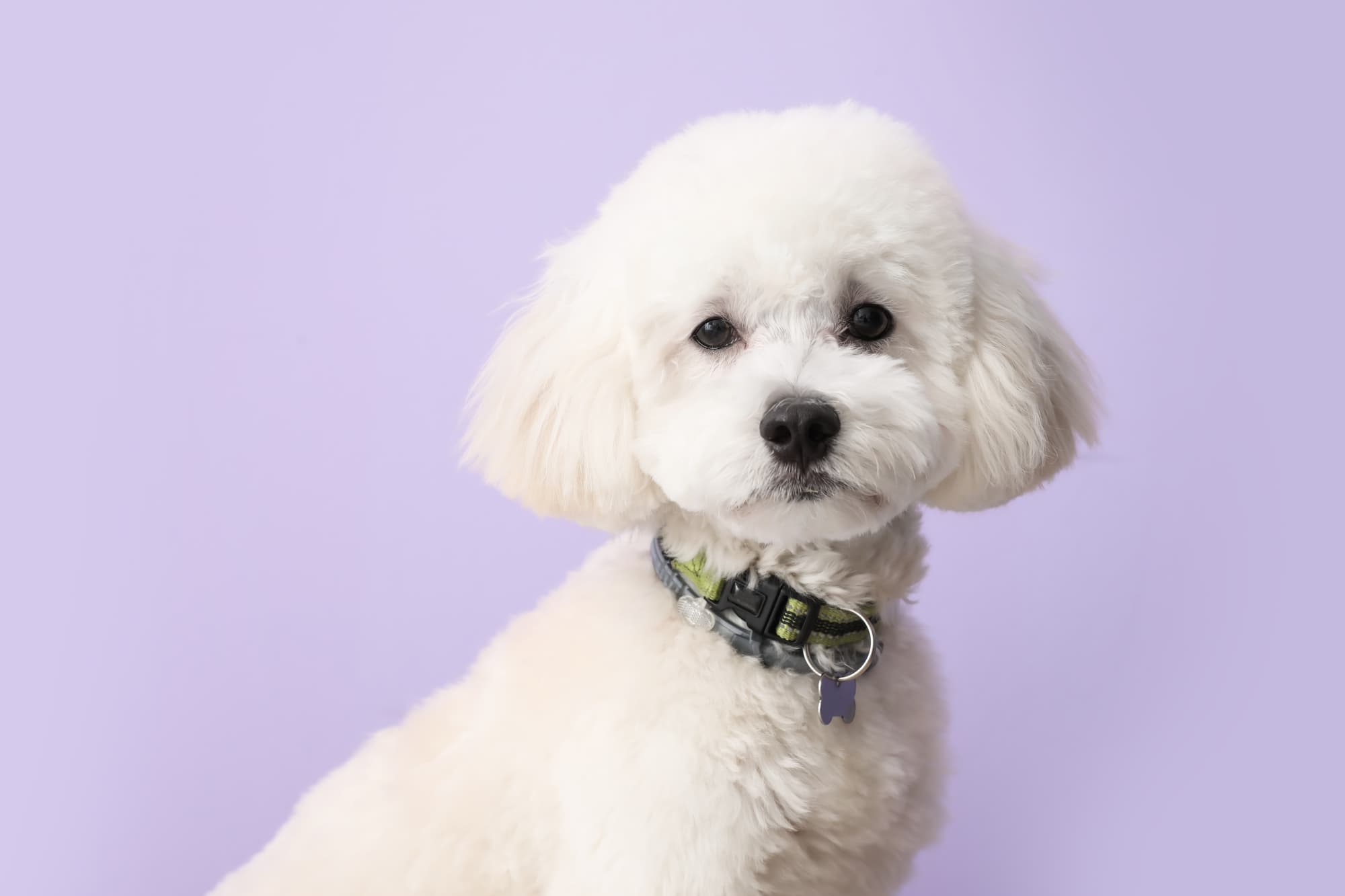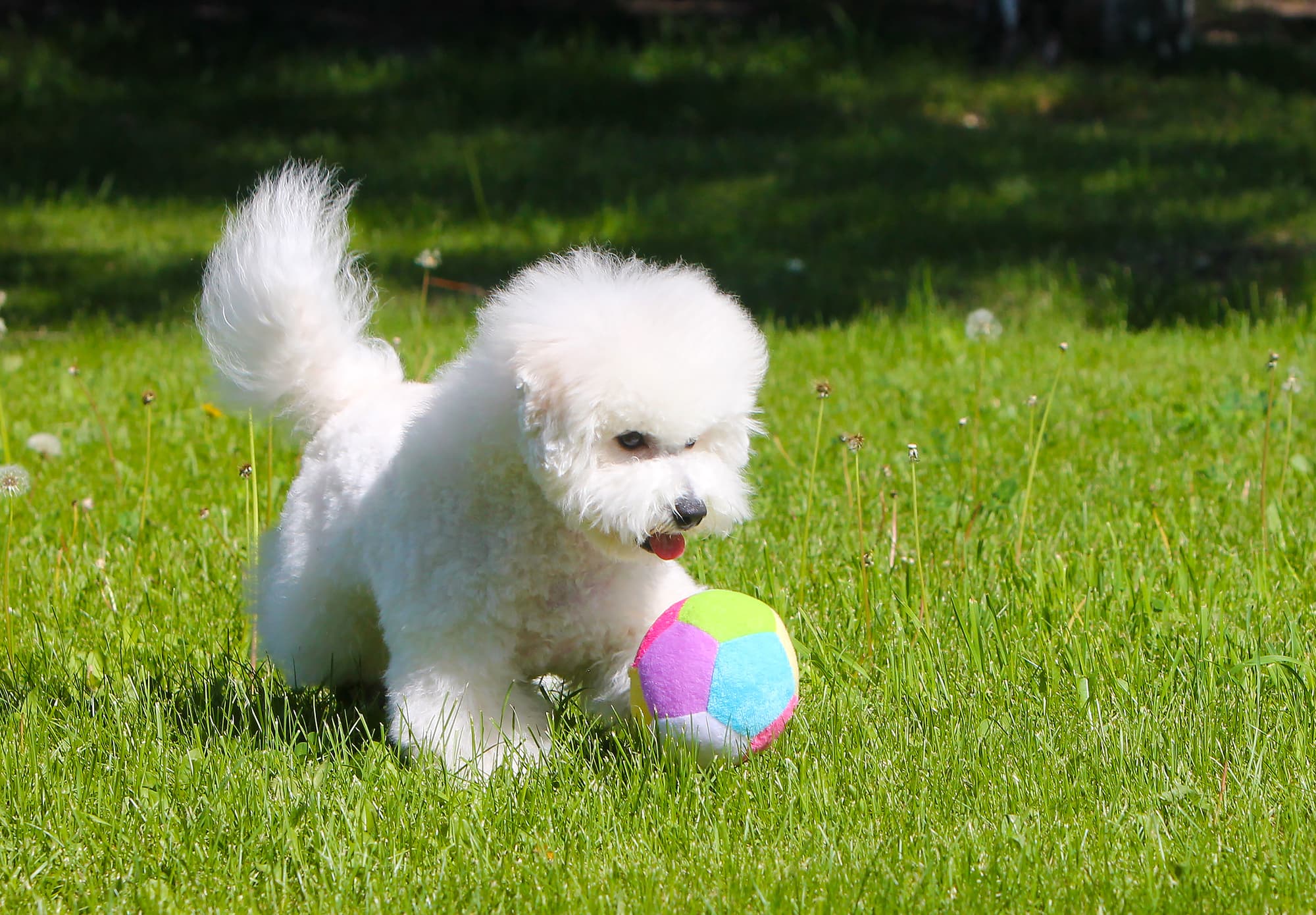Darla was a talented Bichon who played several unforgettable roles in films and TV series back in the 90’s: She was “Precious” in The Silence of the Lambs (1991) and accompanied Buffalo Bill as he carried out sadistic attacks on women. Despite his sadism, he demonstrates a deep affection for his Bichon. Darla also appeared in the sequel TV series, Clarice. Earlier work included playing Pink Pig in Pee-wee’s Big Adventure (1985) and The ‘Burbs (1989) alongside Tom Hanks. In 1992, Darla appeared in Batman Returns before dying in 1993 at the grand old age of 17.

Bichon Frise
Intelligent, affectionate, and incredibly cute, the Bichon Frise could easily be mistaken for a child’s toy. This happy-go-lucky breed originated in the Mediterranean islands, which could be why they’re so easygoing and fun-loving. Bichons are the perfect family pet, especially if you live in a city apartment.
Country of Origin
Spain
Breed Group
Non-sporting (Barbichon or "small poodle")
Height
Male 9.5-11.5 In
Female 9-11 In
Weight
Male 7-12 Ib
Female 7-11 Ib
Life Span
14-15 years
In a Nutshell
A Bichon Frise is your No. 1 fan. Seriously. They think everything you do is the most interesting thing in the world—even if it’s just pouring cereal. Bichons stick by you through thick and thin. They’re there for you through a breakup, and they’re there for you when you’d rather have a little privacy. Even though they may be a little Velcro-y at times, their trademark charm will win you over. These sturdy little companions have been through a few ups and downs during their history but their good humor and adaptability have always got them through. As long as you can cope with their demanding grooming needs, a Bichon Frise is the ideal choice if you’re a first-time dog owner.
Life With a Bichon Frise
Looks & Personality

The crowning glory of the Bichon is its velvety white coat while the black facial features make them look as though they’re smiling. This coat is predominantly white but can be a mixture of white and apricot, white and buff, or white and cream. The outer coat is silky and curly while the undercoat is soft. Without regular brushing, this undercoat will mat.
This breed definitely does have a happy-go-lucky personality. They view everyone as their friend, meaning they’re not the best guard dogs in the world. There’s nothing they like better than a petting or play session followed by a long snooze on the sofa. They like to intersperse these activities with a gentle walk or two. Occasionally, your Bichon Frise may have a fit of the zoomies when they chase around the yard or house. While puppies can be tricky to toilet-train, the Bichon is an intelligent dog that’s easy to train. It picks up new tricks with impressive speed. Many owners take them to agility classes and competitions, something these curious, intelligent, and sociable pets thoroughly enjoy.
Bichon Frises are incredibly smart and take well to learning new tricks. However, their greatest gift may be their emotional intelligence—they’re experts at “reading the room” and knowing exactly who needs some snuggles the most.
The Bichon needs frequent brushing and bathing while regular clipping at the dog groomer must be factored into your budget. As long as you can cope with their grooming needs, a Bichon Frise is the ideal choice if you’re a first-time dog owner.
A tip from a vet
A tip from a trainer
What about your Bichon Frise?
Did You Know

“Bichon Frise” can be confusing to pronounce, especially if you’re not French. The name comes from a French phrase meaning “curly-haired dog.” Bichon Frise is pronounced bee-shahn free-zay.

Francisco Goya included a shaggy Bichon Frise in several of his paintings such as The White Duchess

The Bichon Frise has a fairly low-shedding coat, so those who suffer from the sniffles should be very interested in the breed. They aren’t completely hypoallergenic (no dog technically is), but they have a plush, dense white coat that loses little hair.
In The News
Famous Bichon Frise Owners
The History Behind the Breed
The Bichon Frise has survived through the ages. It has remained a constant throughout civil war, world wars, and the fall of empires. The Bichon breed type originated in Spain (Tenerife, to be exact), where they were used as sailing dogs, but it’s the French that developed them into the lapdog we know today.
Bichon Frise dogs were associated with nobles in Spain, Italy, and France as early as the 13th century. The breed became a favorite dog of Italian nobles in the 14th century King Henry III of France was in love with them and used to carry them wherever he went in a basket around his neck, which ladies of the court reportedly adopted as a new dog-based fashion.
However, their days as pampered lapdogs came to an end with the French Revolution in 1789. As the French aristocracy disappeared or died, their pets were left to fend for themselves. Some were taken in by street entertainers who found them easy to train. The Bichon Frise was soon a fixture in circuses around the globe. The two World Wars were also difficult times as the breed didn’t have any value as working dogs. But, thanks to a few dedicated people, the Bichon survived in France and Belgium. The first Bichon Frise was brought to America from France in 1956 and in 1964 and was recognized as a non-sporting breed in 1973.
If a Bichon Frise Could Talk…
A Quick Anatomy Lesson


Bichons are known for their long lifespan of 14-plus years, but they can have a few common health conditions. The Bichon Frise is an overrepresented breed for diabetes mellitus and eye problems, such as corneal dystrophy and cataracts.
Common Health Problems
What about your Bichon Frise?
















